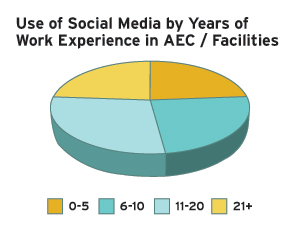

For any construction firm thinking that now is a good time to build out a social media presence, that company could do worse than the example of Martell Home Builders.
The Canadian firm had two big problems that bedevil many contractors: (1) Customers didn’t know where to find them when they needed them; and (2) they never finished their jobs on time. Problem number two took some old-fashioned brute force to manage resources on a project.
Problem number one just took some social media and a commitment to the approach.
The company added a “Where’s My Contractor” feature on its web site that also listed Twitter accounts of the firm’s managers so clients could always see what they were up to and know how to find them. It also connected the web page to a Google Map application programming interface (API), effectively adding a stickpin on a map letting them know where in the world they could find their contractor.
For many construction and engineering firms, however, Martell’s social media example is a rarity. Although architecture and pure engineering firms have been early adopters of social media tools such as Twitter and Facebook—and continue to innovate these communication platforms in their business and communications strategies—for plenty of construction firms of all sizes, their social media use and presence can be hit, miss or just not part of the mix at all.
Some embrace it, such as Bechtel, which counts close to 18,400 followers of its Twitter output, a lively Facebook community and over 21,000 followers of its page on LinkedIn, to name the three dominant social media platforms among many.
Others are notably absent, such as Fluor, which has no social media presence beyond its very detailed website.
Why are so many construction firms hesitant to use social media as part of their operations?
“It’s more like a modern day press release tool for them still,” says Daryl Andrews, vice president of marketing and business development at 360 Construct, a building management firm.
Andrews recently went through the top 10 firms in ENR’s Top 200 Contractors list, and checked on their Social Media presence of each (Twitter, Facebook, LinkedIn, for example). He discovered that, for many of the major firms on this list, a social media presence is still lacking. His blog post, which he sent out on his Twitter feed, spells out which companies have a Twitter account, the number of followers, and more.
Andrews, who grew up in the construction business and worked for construction management giant Skanska before his involvement with 360 Construct, says he understands why, for many firms, it's a slow-go to use social media as part of their business strategy. "For many construction firms, all their work is about getting a project off the ground."
It's a similar sentiment that the Society for Marketing Professional Services noted in an August, 2011 white paper called "The Client's Use of Social Media and Social Networking." Authors Holly Bolton, director of marketing for CE Solutions, Adam Kilbourne, director of marketing for Tec Inc. Engineering & Design and Dana Galvin, communications director for construction firm Barton Malow, sampled over 1,600 members and received 160 completed responses. The breakdown was about 36 percent engineering firms, 24 percent architecture, 17 percent in combined architecture/engineering and the balance in construction, landscape design and facility owners.
"Many of our AEC clients are not using social media in the decision making for construction-related projects, but rather as a communications and PR tool," the report says. Patrick Prothe, a marketing manager with Viewpoint Construction Software, told the authors that newcomers to social media need to understand the time commitment required for social media, even through many tools are low cost or free.
But for every firm that is still holding off on creating a Facebook page or launching a Twitter account, there are others that have found a use case that fits their needs and goals.
For example, ENR’s Jan Tuchman interviewed Jeffrey M. Taub, senior marketing specialist for VHB + Eng-Wong, (http://www.vhb.com), about how the planning and transportation consulting firm has used Twitter to help promote many of its clients’ projects.
Other firms have found that private social networks fit the bill, as ENR’s Tudor Van Hampton reports in his story about the rise of enterprise social networks. ENR’s Scott Judy delves into evolving policies for social media use that helps define best practices that firms are creating. Business editor Richard Korman looks at the success firms are having using social media to recruit new talent. You can see more stories in this special report.
Before You Social, Know What You Want
Jason Falls, an online marketing expert and co-author of the book "No Bull**** Social Media," says engineering and construction firms are not alone in wanting to first know the value proposition of using social media—as well as the risks—before they launch into these platforms. His book describes the seven business drivers for using social media in a business case:
- Enhancing branding and awareness
- Protecting your reputation
- Extending your public relations
- Building community
- Extending customer service
- Facilitating R&D
- Driving sales leads, or lead generation
“The value proposition for this really depends on your business,” he says. “Some use it to drive sales, others use it for customer service, as in the case of Martell Builders, which used a Twitter channel to help fix a customer pain point.
“When companies provide valuable content to the audience they’re trying to reach, they are building trust and relationships. If they know you and trust you, they’re more willing to buy from you."
But communicating effectively in social media platforms (Twitter, Facebook, LinkedIn) can be tricky.
First, he says, businesses need to choose which ones they would like to accomplish and build on that. Otherwise, there is a risk in deploying social media without a clear business strategy or goals in mind.
“There are certainly challenges, says Falls, “Building relationships with customers is what you’re doing here and building relationships takes time. You are going to have to dedicate time and physical resources to be more efficient in how you approach each channel.
It’s not as simple as throwing up a blog or having a Facebook page, he adds. "You have to be prepared."
The story was updated to include details from SMPS and correct the spelling of Jason Falls.


Post a comment to this article
Report Abusive Comment